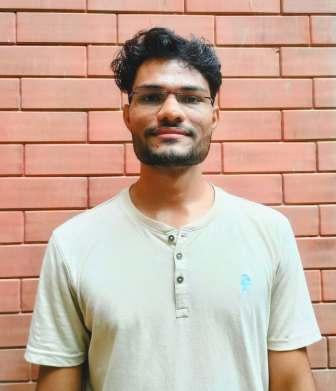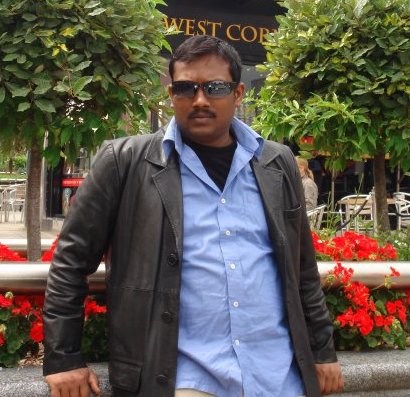Ashok Mane
Introduction
We are celebrating the 77th independence day. But the question remains whether we have been successful in ensuring independence to all or it is just an annual festival for few. I am writing my personal views about social change in India and how our Preamble is helpful to this process.
In recent times, there has been a disturbing increase in atrocities against Dalits, highlighted by recent killings in Rajasthan and the boycott of Dalits in Subhai village, Uttarakhand. Particularly disheartening is the presence of anti-Dalit slurs in Jawaharlal Nehru University, indicating that universities mirror the predominantly casteist nature of Indian society, rather than functioning as progressive institutions isolated from societal prejudices. This suggests a fundamental issue within our societal structure, where discrimination based on ascribed identities is pervasive.
To address this, we must revisit the Preamble of our Constitution, not merely as an introductory statement, but as a source of inspiration for societal transformation towards a more egalitarian and just society. The Preamble embodies the essence of India’s constitutional vision, advocating principles such as democracy, secularism, and socialism. It serves as a beacon for justice in a landscape where injustice is commonplace, a champion of equality in the face of rampant and escalating inequality, and a promoter of liberty constrained by entrenched societal norms and hierarchical discrimination based on caste, creed, race, religion, gender, and place of birth.
Furthermore, the Preamble underscores the principle of fraternity. Despite the national pledge, “All Indians are my brothers and sisters,” we witness daily contradictions where women are raped, Dalits are brutally attacked, Muslims are lynched, and Adivasis are dispossessed of their natural resources. Alarmingly, an individual’s worth is often judged by their birth rather than their actions. Despite these paradoxes, the Preamble must continue to guide our government, citizens, bureaucrats, lawyers, and lawmakers.
Our founding fathers envisioned a progressive, scientific, and liberal society, contrasting sharply with the regressive forces attempting to reverse this progress. These conservative and orthodox elements openly challenge advancements towards scientific thinking, a spirit of inquiry, and critical mindsets. Nonetheless, proponents of constitutionalism and equality must persist in their pursuit of a society where dignity and respect are safeguarded, and no individual faces violence due to their caste or religion.
Indian Society Today
Indian society presents a unique and complex structure, deeply entrenched in what Dr. B. R. Ambedkar termed “graded inequality.” Unlike the binary class divisions typical of Western societies, India’s social fabric is woven from multiple layers of caste and sub-caste. These layers are not merely divisions; they embody what Dr. Ambedkar described as an “ascending sense of reverence and descending sense of contempt.” In essence, an individual’s position within this hierarchy, determined by the accident of birth, dictates the degree of respect and privileges they receive from societal and institutional frameworks. Conversely, those at the bottom of this hierarchy are subjected to discrimination, social stigma, undesirable occupations, material deprivation, and limited social mobility. This stratification illustrates the ascribed privileges within India’s social ladder.
In examining the progress of Indian society, particularly regarding issues such as untouchability, inter-dining, and inter-caste marriages, one must question the extent to which caste-related reforms have taken root, given that caste remains the bedrock of Indian society. Additionally, it is pertinent to consider the influence of the Preamble on India’s social reform movements and religious reforms. During the Constituent Assembly debates, leaders like Sir Alladi Krishnaswami Iyer lauded the Preamble, with remarking that it encapsulates what had long been the aspirations of the nation: “The Preamble to our Constitution expresses what we had thought or dreamt for so long.”
While the principles and vision for Indian society articulated in the Preamble are clear, the critical question is whether these ideals have materialized in practice or remain largely theoretical. A mixed assessment emerges when analyzing Indian society. On one hand, the practice of untouchability is constitutionally banned under Article 17, and there is a growing awareness that untouchability is both immoral and illegal. However, instances of untouchability persist, such as the barring of Dalits from temple entry or the violent repercussions faced by Dalits for actions like touching water sources reserved for higher castes. Many such cases go unreported, indicating that substantial reform is still needed.
Regarding inter-dining, the prohibition of discrimination in public spaces (Article 15) has largely normalized inter-dining in public institutions such as universities, colleges, hotels, and restaurants. However, in rural settings, caste-based dining segregation continues. For example, in my own village, Dalits were not permitted to sit with other castes during public religious functions, a practice that may persist in many villages due to insufficient social reforms. As Dr. Ambedkar observed, “villages are den[s] of casteism,” where such discrimination is openly practiced.
When it comes to inter-caste marriages, Dr. Ambedkar, in his seminal work Annihilation of Caste, advocated for inter-caste marriages as a key strategy to dismantle the caste system. Despite this, inter-caste marriages constitute only about 5 percent of all marriages in India. Positively, there is an observable shift in the mindset of India’s youth, who increasingly support inter-caste marriages. However, family and societal pressures often prevent these marriages from occurring. Furthermore, even when inter-caste marriages do take place, internal complexities arise, such as discrimination against a girl from a backward caste married into a forward caste family, reflecting the deep-seated casteist attitudes that persist. Tragically, such marriages can also lead to honor killings, an ongoing reality in India.
In short, even after seventy-five years of independence, Indian society has not undergone the necessary reforms to eradicate caste-based discrimination. To achieve meaningful progress, collective action is required from the state, civil society, pressure groups, political parties, and public intellectuals.
The quest for an Egalitarian Society
The Indian Constitution envisions a society grounded in the principles of equality, justice, and fraternity. However, it is undeniable that Indian society has historically been, and in some respects continues to be, marred by barbarism and a lack of civility. A society that judges individuals based on birth and perpetuates caste-based discrimination is inherently narrow-minded and uncivilized. To alter this reality, change must begin within each individual, followed by collective efforts to transform society. We must strive to realize the vision of “Begumpura” as articulated by the saint-poet Ravidas—a society where all are fed and treated equally, as reflected in his words: “ऐसा चाहूँ राज म जहाँ मिले सबन को अन, छोट बड़ो सब सम बसे रैदास रहे सन” (I wish for a realm where everyone has food and all are treated equally).
Similarly, the Preamble of our Constitution aspires to establish a society that is democratic, where all individuals are equal politically, socially, and economically. It envisions a socialist society where cooperation and equality triumph over competition and inequality, and a secular society where no single religion dominates others. The Preamble also underscores the importance of justice—political, social, and economic—and advocates for equality of opportunity and status, ensuring that no one is deprived of their rights due to their identity or birth. Furthermore, the freedom of speech and expression is a fundamental pillar of this just and egalitarian society. Most importantly, the concept of fraternity is essential, as it is the bond that can prevent conflicts arising from caste, religion, sex, and other differences. This sense of fraternity is crucial for maintaining national unity. Despite the numerous challenges we face—such as communalism, caste-based violence, patriarchal oppression, and regional divides—our shared identity as Indians must unite us, transcending our disagreements and fault lines. Dr. B. R. Ambedkar emphasized this unity, asserting that we are “firstly and lastly Indian.” Pride in this identity can only flourish if we treat everyone equally and provide equal opportunities for all.
In conclusion, the journey of social transformation in India remains incomplete. The Preamble of the Indian Constitution will continue to serve as a source of inspiration for achieving social change. However, until this change is fully realized, societal unrest will persist. We must bear in mind the words of Martin Luther King Jr.: “Injustice anywhere is a threat to justice everywhere.”
~~~
Ashok Narayanrao Mane has completed his masters in international relations and area studies from Jawaharlal Nehru University recently. Along with international relations, he has keen interest in bahujan politics and the rights of marginalized communities and works for them in whatever way he can.










